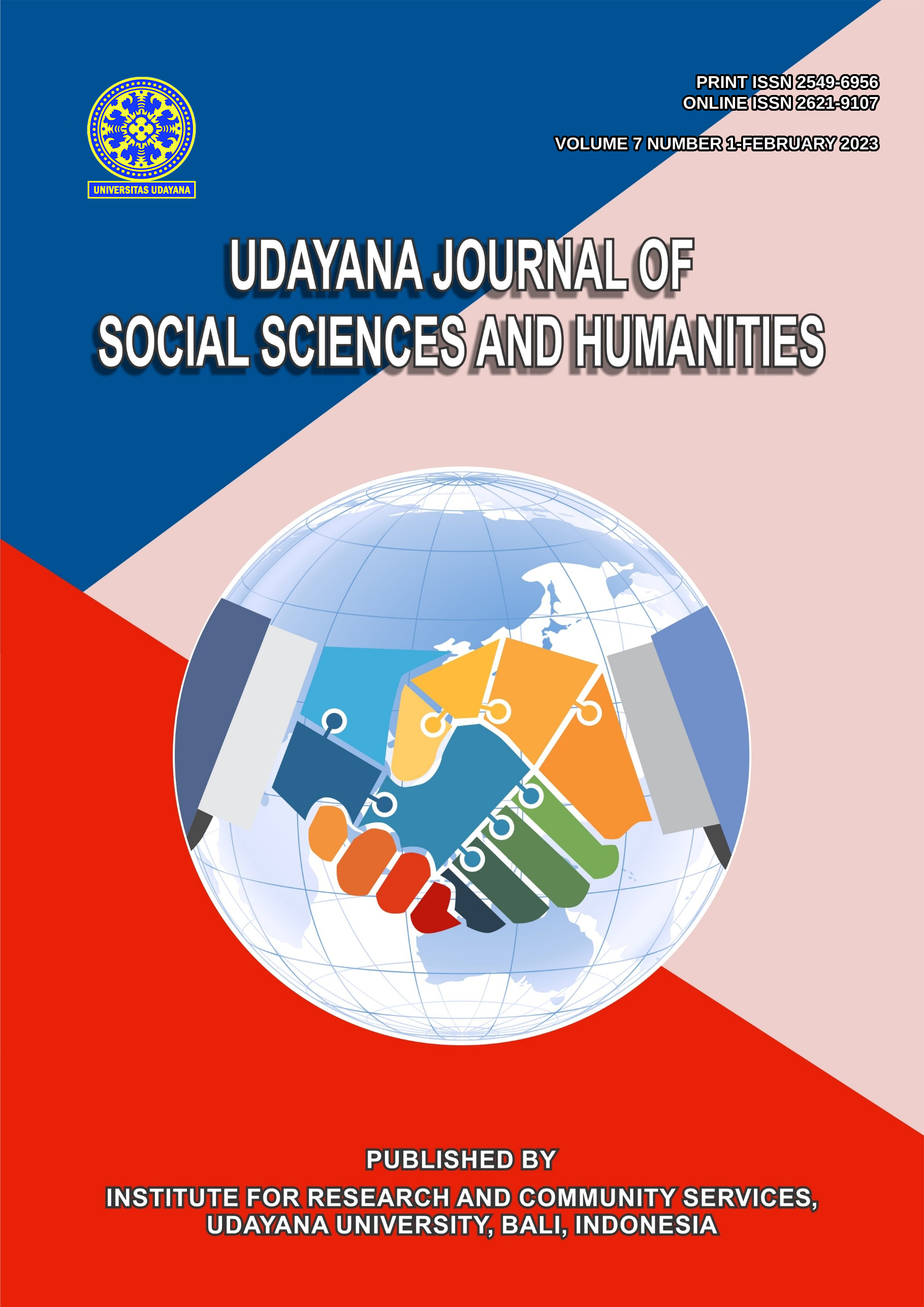THE ACQUISITION OF VOCABULARY BY THE YOUNG LEARNERS THROUGH CHILDREN SONGS
Abstract
This study emphasizes the English learning process for young learners in acquiring English vocabulary through children's songs. The aims of this study are to find out what kinds of vocabulary that the young learners acquire through children's songs and analyze how to do the internal and external factors that influence the acquisition of vocabulary acquired by young learners through children's songs. The data in this study were taken from observing 4-5 years old young learners. The data were collected directly by observing the young learner and questionnaire. The technique used in obtaining the data from the object was note-taking. It was used to know the progress of the young learner during observation. Then, the collective data were analyzed using the qualitative method. The findings of this study showed that children's songs had a positive influence on acquiring English vocabulary. First, the result of this research shows that there are eight songs that were taught to the children. Hooray School kindergarten students were able to master 62 vocabularies from all of the songs. There are 31 nouns, 20 verbs, 7 adjectives, 2 prepositions, 1 pronoun, and 1 adverb. Second, the internal factor includes age, experience and learning style. The external factors consist of motivation, instruction, and access to foreign speakers. Children who are more experienced, motivated, and have access to native speakers, are easier to acquire English vocabulary.
Downloads
References
[2] Arta wiguna, Ida bagus alit. 2020. “Efektivitas Penerapan Metode Hypnoteaching Dalam Meningkatkan Aktivitas Belajar Siswa.” PEMBELAJAR: Jurnal Ilmu Pendidikan, Keguruan, Dan Pembelajaran 4 (2). https://doi.org/10.26858/pembelajar.v4i2.13006.
[3] Arta Wiguna, Ida Bagus Alit. 2020. “Implementasi Metode Hynoteaching Dalam Meningkatkan Mutu Aktivitas Belajar Siswa Di SMAN 7 Denpasar.” Jurnal Penjaminan Mutu 6 (1). https://doi.org/10.25078/jpm.v6i1.1204.
[4] Brown, H. Douglas. 2000. Principles of Language Learning and Teaching. California: Longman.
[5] Chomsky Nuam. 1965. Aspects of the Theory of Syntax. Cambridge. Cambridge: The MIT Press.
[6] Connell, P. J. 1987. Teaching Language Rules as Solutions Tolanguage Problems: A Baseball Analogy. Language, Speech,and Hearing Services in Schools.
[7] Hasa. 2020. “Difference Between First Language and Second Language Acquisition.” PEDIAA. 2020. https://pediaa.com/difference-between-first-language-and-second-language-acquisition/#:~:text=sentences to communicate.-,First language acquisition is children’s acquisition of their native language,an active and conscious process.
[8] Linguistic Society of America. 1924. “Linguistic Society of America.” Https://Www.Linguisticsociety.Org/. 1924. https://www.linguisticsociety.org/.
[9] Noam Chomsky. 1972. Language and Mind. USA: Harcourt Brace Jovanovich. Inc.
[10] Sharon Novak. 2014. “What Are the Characteristics of a Good Kids Song.” Https://Www.Linkedin.Com/. 2014. https://www.linkedin.com/.
[11] Sugiyono. 2017. Metode Penelitian Pendekatan Kuantitatif, Kwalitatif, R&D. Bandung: Alfabet.
[12] Wiguna, I. B. A. A., & Ekaningtyas, N. L. D. 2021. “STRATEGI ORANG TUA DALAM MENDAMPINGI ANAK USIA DINI BELAJAR DARING DI RUMAH.” Pratama Widya: Jurnal Pendidikan Anak Usia Dini 6 (1): 86–95.
[13] Wiguna, Ida Bagus Alit Arta. 2020. “Student Responses on the Application of Hypnoteaching Method to Increase Learning Activities.” Jurnal Pendidikan Dan Pengajaran 53 (2). https://doi.org/10.23887/jpp.v53i2.23346.






